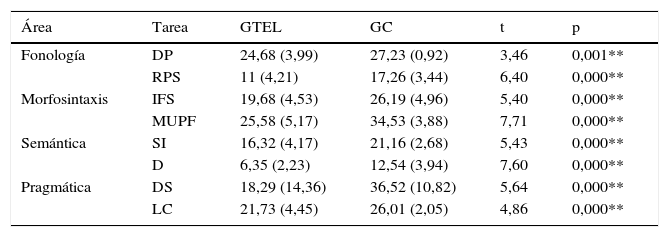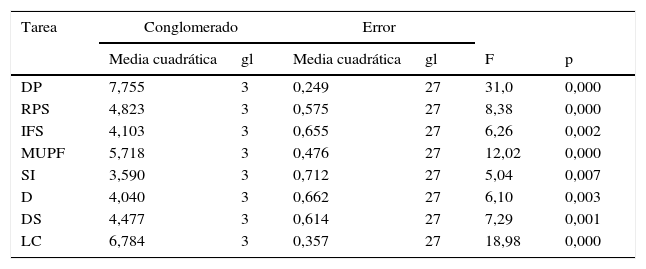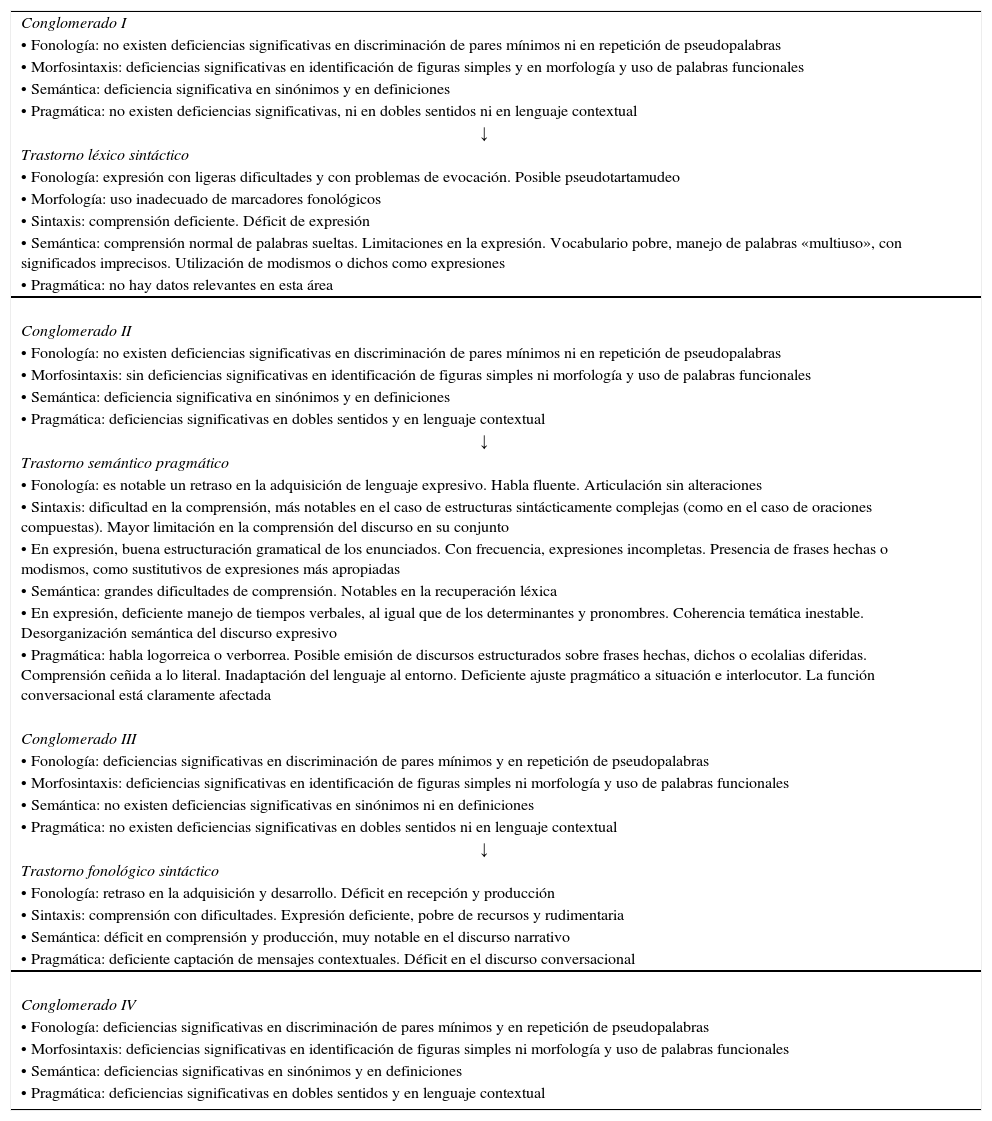Existen distintas propuestas sobre marcadores psicolingüísticos y sobre taxonomías del trastorno específico del lenguaje (TEL). Este trabajo presenta los resultados obtenidos en 8 tareas psicolingüísticas por 2 grupos de niños: 31 niños con TEL (GTEL) y 31 niños igualados en edad cronológica (GC). Las tareas han sido elaboradas ad hoc para valorar los marcadores psicolingüísticos en las 4 áreas clásicas: fonología, morfosintaxis, semántica y pragmática. En primer lugar, se comprueba que los niños del GTEL rinden significativamente peor que los niños del GC en las 8 tareas. En segundo lugar, un análisis de conglomerados K-medias clasifica a los 31 sujetos del grupo TEL en 4 conglomerados. En tercer lugar, un análisis discriminante comprueba si la clasificación clínica hecha a priori se mantiene tras los resultados del estudio. Se presenta el perfil de los conglomerados y se discuten sus características respecto a los subtipos de la taxonomía clínica de Rapin y Allen. Finalmente, se analizan las similitudes y diferencias entre ambas tipologías. Los resultados obtenidos ayudan a esclarecer los marcadores psicolingüísticos del TEL en niños de habla española y refuerzan la utilidad clínica de su clasificación en subtipos y la vigencia de la taxonomía de Rapin y Allen.
There are various proposals for psycholinguistic markers and for taxonomies of specific language impairment (SLI). This study presents the results obtained in eight psycholinguistic tasks by two groups of Spanish-speaking children: 31 children with SLI (SLI) and 31 children matched for chronological age (CA). The tasks were developed ad hoc to assess psycholinguistic markers in the four traditional areas: phonology, morphosyntax, semantics and pragmatics. Firstly, we found that SLI group scored significantly worse than CA group in the eight tasks. Secondly, a K-Means cluster analysis distinguished five clusters within the 31 subject of SLI group. Thirdly, a discriminant analysis checks whether an a priori clinical classification is maintained after the study results. We present the profile of these clusters and discuss their features regarding Rapin & Allen taxonomy clinical subtypes. Finally, the similarities and differences between the two classifications are analyzed. The results obtained in this work help shed light on the psycholinguistic markers of the Spanish-SLI and reinforce the clinical utility of its classification into subtypes and the validity of the Rapin & Allen taxonomy.
Artículo
Comprando el artículo el PDF del mismo podrá ser descargado
Precio 19,34 €
Comprar ahora
















